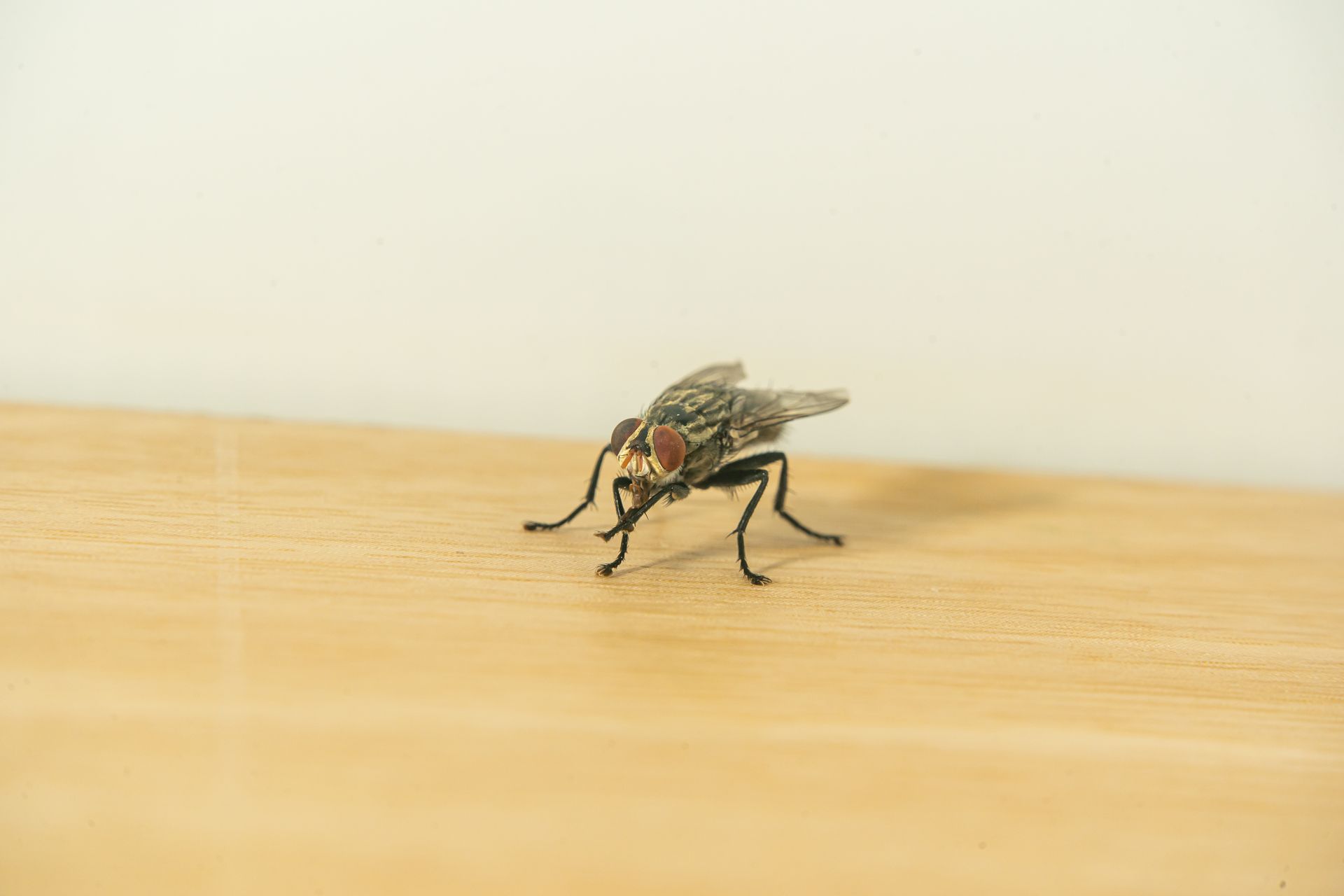The Science of Natural Pest Repellants: What Works?
In our search for ways to keep unwanted insects and creatures at bay, nature offers its own set of solutions. Scientists have been exploring the effectiveness of various plants and substances that seem to naturally discourage pests. These solutions promise a way to manage pest problems without the need for harsh chemicals, potentially reducing our environmental impact.
The Essentials of Natural Pest Control
As residents of Nevada seek environmentally responsible ways to maintain their homes, the allure of natural pest control solutions has grown substantially. These methods, which range from plant-based deterrents to essential oils, offer a way to avert unwelcome critters without the use of conventional, synthetic chemicals. The essence of natural pest repellents lies in their capacity to deter pests using substances that are more harmonious with the surrounding environment.
Opting for natural repellents presents numerous advantages. First and foremost, these substances often have a lower toxicity profile compared to their synthetic counterparts, reducing potential risks to human health and household pets. When correctly used, they can provide effective protection while minimizing the ecological footprint—a crucial consideration for the environmentally conscious homeowner. Natural solutions can also contribute to a more sustainable approach to pest management, aligning with the values of Nevada residents who prioritize family safety and environmental stewardship.
Understanding Essential Oils and Plant-Based Repellents
In the realm of natural pest deterrents, essential oils have garnered attention for their ability to repel a variety of pests. Common essential oils employed in this endeavor include:
- Citronella, known for its mosquito-repelling properties,
- Eucalyptus, often used to ward off ticks and lice,
- Peppermint, which can deter spiders and ants, and
- Lemongrass, which is effective against a broad spectrum of insects.
These oils contain compounds that are unpalatable or confusing to several pest species, effectively creating a barrier that deters them from entering treated areas. To illustrate, citronella oil contains components like citronellol and geraniol, which mask scents that mosquitoes use to find their hosts.
Scientific research supports the efficacy of certain essential oils in pest control. Studies have indicated that specific concentrations and formulations can be effective at repelling insects in both laboratory and field settings. Homeowners can take advantage of these findings by selecting products or creating homemade remedies based on scientific evidence.
Research findings highlight the varying levels of effectiveness and duration, suggesting that some combinations of oils may work better than others.
Geography-Specific Challenges and Solutions
The distinctive climate and landscape of Nevada pose unique challenges when it comes to pest control. Factors such as aridity, temperature extremes, and native flora and fauna influence pest behavior and the effectiveness of various repellent strategies. Understanding these regional traits allows homeowners to select natural repellents that are compatible with Nevada's specific conditions.
For instance, the dry desert climate of many areas in Nevada necessitates repellents that are resilient to high temperatures and low humidity. In such environments, plant-based options, especially those derived from indigenous plants already adapted to the local climate, can serve as excellent deterrents for the common pests in the region.
Safety and Environmental Considerations
While natural repellents are generally perceived as safer alternatives to synthetic chemicals, it is crucial to consider their potential impacts. Essential oils, for instance, should be used with caution around pets, as some can be toxic if ingested or applied to their skin. Homeowners should be well-informed about the safe use of these products to prevent unintended harm to their furry companions.
Equally important is the effects these natural solutions can have on beneficial insects like bees and butterflies, which are vital to the pollination of many plants. Careful selection and application of repellents can mitigate negative impacts on these valuable insect populations, enabling residents to protect their homes while contributing to the preservation of local ecosystems.
An Assessment of DIY vs. Professional Applications
With the growing trend of natural pest control, homeowners are often caught between the DIY approach and seeking professional help. DIY applications can be cost-effective and gratifying for those who enjoy hands-on home maintenance. They may also present challenges, including the proper identification of pests, appropriate dosage, and safe application methods. On the other hand, professionals have the expertise to navigate these concerns with precision, ensuring the natural repellents are effective and used in a manner that is both safe and environmentally conscious.
When considering natural pest control, the expertise of a professional can make a significant difference. They have access to a broader range of products and are trained in techniques that may increase the effectiveness of natural repellents. For instance, integrated pest management strategies often involve a combination of solutions tailored to specific environments and pest behaviors—something that professionals are specifically skilled in implementing.
Incorporating Natural Strategies into Integrated Pest Management (IPM)
Integrated Pest Management (IPM) is an environmentally friendly approach that combines a variety of practices for effective pest management with minimal harm to people, property, and the environment. IPM stresses the use of natural repellents and deterrents as part of a more comprehensive strategy that may include monitoring, identification, and targeted controls. By applying these techniques, homeowners can help keep their living spaces pest-free while adhering to sustainable practices.
There are numerous
case studies showcasing the success of IPM in residential areas. These examples highlight how natural methods, when combined with other IPM tactics, can effectively control pest populations. Professionals are adept at integrating these strategies into a homeowner's pest management plan, providing a science-backed defense against pests that aligns with the values of family safety and environmental responsibility.
Myth-Busting: Common Misconceptions About Natural Repellents
Despite the advantages of natural repellents, there are common misconceptions that may lead homeowners astray. One such belief is that all-natural solutions are universally safe and can be applied without restriction. While typically safer than synthetic chemicals, they must still be used responsibly to prevent potential adverse effects on health or the environment.
Another widely held belief is that natural repellents are not as effective as chemical options. Research, Has shown that when used correctly, certain natural repellents can be just as effective, if not more so, in deterring pests. It's crucial to focus on evidence-based practices and avoid being swayed by unfounded claims. By dispelling myths and clarifying the science, homeowners can make informed decisions about the methods they use to protect their living spaces.
Tips for Homeowners in Nevada
Understanding the local ecosystem and common pest behaviors is key to effectively using natural repellents in Nevada. Homeowners should become familiar with identifying the signs of different pests and learn about their habits and life cycles. This knowledge can help in selecting the right natural repellents and applying them at optimal times for the greatest effect.
For instance, recognizing the early signs of ant infestation, such as the presence of scout ants, could prompt the timely use of peppermint oil along entry points to prevent a larger problem. Incorporating native plants that possess pest-repellent properties into landscaping can serve as a long-term, natural defense against pests. Homeowners in Nevada can utilize these strategies to maintain a harmonious balance between a pest-free home and their cherished desert surroundings.
Conclusion
The garden of pest control options abounds with natural repellents, offering a bouquet of benefits for those who are environmentally inclined. Essential oils and plant-based solutions have been examined, not just through anecdotal evidence but via scientific research that verifies their pest-repelling properties. Especially in areas like Nevada, where the ecosystem demands careful consideration, these findings are crucial for homeowners seeking eco-friendly methods.
Natural repellents resonate with the values of Nevada residents, who prioritize the safety of their families and the conservation of local ecosystems. The adoption of these methods correlates with a broader commitment to living in harmony with the environment. It is evident that when used correctly, natural pest deterrents can form a strong front against unwanted critters while preserving the delicate balance of our surrounding flora and fauna.
In closing, the science of natural pest repellants continues to evolve. Research is ongoing to develop new solutions and improve upon existing ones. Homeowners are encouraged to stay informed on the latest findings and consider professional guidance to apply these methods most effectively. As the field grows, so too does our understanding, paving the way for advanced pest control strategies that are safe, effective, and environmentally responsible.
For residents in Nevada, adopting natural repellents is more than just a choice; it's a statement of responsibility to our homes, our health, and the diverse landscape we inhabit. By integrating these eco-friendly solutions into our pest control routines, we contribute to a sustainable future, ensuring our actions align with the well-being of the world we live in.
Discover the scientifically backed solutions nature offers. To learn more about these environmentally friendly options and how you can implement them in your daily life, reach out to us.



Call or chat with us today!
Nevada
5595 Equity Ave, Ste 650, Reno, NV 89502
1855 Sullivan Ln, Sparks, NV 89431, United States of America
Idaho

